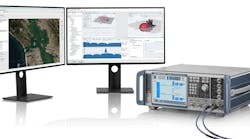When designing components, front-end modules, or receivers, they are typically tested under ideal conditions in a lab, to determine the performance specifications. While valid and necessary, they may be lacking under real-world conditions. This application note will focus on the effects of scattered, reflected, and otherwise distorted signals with channel impairments, as observed in the real world, and how we can account for these effects during the testing and characterization of a receiver. We’ll define fading, describe fading profiles, and sketch two scenarios. Lastly, discuss an integrated fading solution based on a vector signal generator and its wideband fading simulator.

Sponsored Content
Receiver testing: The importance of fading
Feb. 8, 2024
